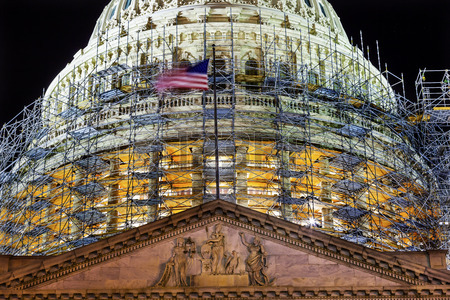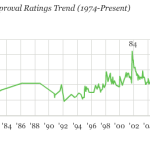The dome of the United States Capitol, one of the most recognizable landmarks in our nation’s capital, is currently under construction. Scaffolding is draped against it, as the Capitol Dome is in the process of being restored. Many would argue that the scene of construction is an apt metaphor for what is happening in Congress today.
By many accounts, the Congress is broken—plagued by soaring partisanship, ineffective leadership, and near historically low levels of public approval. Despite all these things, the federal government is as important as ever to the well-being of states and municipalities.
Aside from the billions of dollars that make their way from the federal government’s coffers to localities each and every year, how does the federal government truly matter to the lives of people in Cincinnati? Washington is so far removed both physically and culturally from most of the country that many people feel both disconnected from and discouraged by the political process that they see as out of their control.
Many argue that the government that governs closest governs best, but that is not always the case, particularly when it comes to truly monumental issues. Besides the lack of fiscal capacity, states and municipalities are often strategically disincentivized to handle these issues alone.
This might include something like the replacement of the Brent Spence Bridge, which has stakeholders in Kentucky and Ohio in a tizzy over how to reach a solution to fortify one of the Cincinnati regional economy’s most important assets. It might also include issues that seem far away, like climate change. In this case, no one individual actor has the appropriate role or responsibility to deal with problems of such a large magnitude.
From many people we are one. And there may not be a better time than now to be reminded that what happens in the city along the Anacostia and Potomac Rivers has the potential to have a large effect on what goes on in a city along the banks of the Ohio River. Our government is a federalist system with power devolving from the top, and where even the smallest of decisions can have large and far-reaching implications.
Bruce Katz of Washington’s Brookings Institution, one of the city’s most venerable think tanks, has said on many occasions that “the cavalry (the federal government) is not coming…we (state and local governments) are on our own.” While I agree with his sentiment that there is much more that the federal government could be doing to help improve cities and regions.
In future writings I hope to illuminate some of the implications, both big and small, of federal action to show the power of decisions that happen in Washington matter for the places we call home. In addition, I hope to provide more of a data-informed perspective to the issues of the day in Cincinnati, and use this space as a platform to elevate the discussion around the importance of community-level data to better understand our regions, cities and neighborhoods.
EDITORIAL NOTE: Ben Robinson is a Cincinnati native that currently lives in Washington, DC, where he does not work for the federal government. He currently works as a data analyst for the Washington DC School System. As our new Washington correspondent, Ben will be covering topics from Capitol Hill for UrbanCincy as they relate to local issues and projects.
Ben is a graduate of Walnut Hills High School, and holds a BA in economics and urban studies from the University of Pittsburgh, and a master’s degree in public policy from the University of Southern California. In addition to Cincinnati and Washington DC, Ben has also lived in Los Angeles and Pittsburgh.

